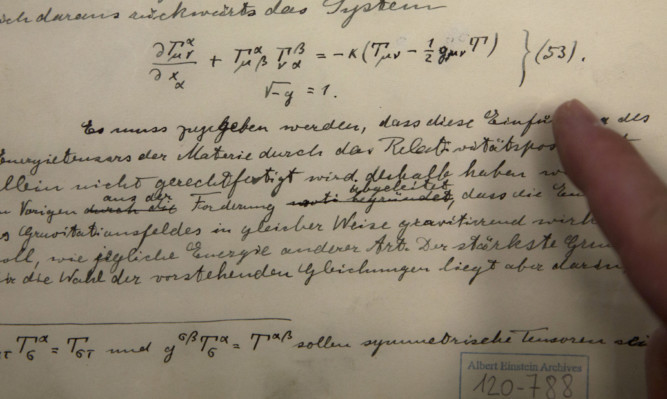Gravity waves – ripples in spacetime – have been detected by scientists a century after Albert Einstein predicted their existence.
The discovery, made in the US, was described by one British member of the international team as “the biggest scientific breakthrough of the century”.
Capturing gravitational waves could open a new window to the universe and even help scientists to watch the cosmos being born.
The subtle distortions of spacetime are generated by cataclysmic events such as the collision of black holes or super-dense neutron stars, or powerful stellar explosions.
As the waves spread out, they compress and stretch the very fabric of the universe.
Although astronomical observations have hinted at their presence, until now they have remained a theoretical concept based on Einstein’s mathematics.
Scientists detected them using laser beams fired through two perpendicular pipes, each four kilometres long, situated nearly 2,000 miles apart in Hanford, Washington and Livingston, Louisiana.
Together they make up the Laser Interferometer Gravitational Wave Observatory (Ligo), where the hunt for gravitational waves only began in earnest last September.
Making the announcement at the National Press Club in Washington DC, laser physicist Professor David Reitze, from the University of Florida, said: “Ladies and gentlemen, we have detected gravitational waves. We did it.”
He was greeted with loud applause.
British expert Professor James Hough, from the University of Glasgow, claimed the breakthrough was more important than the discovery of the missing Higgs boson, the so-called “God particle” linked to mass, in 2012.
